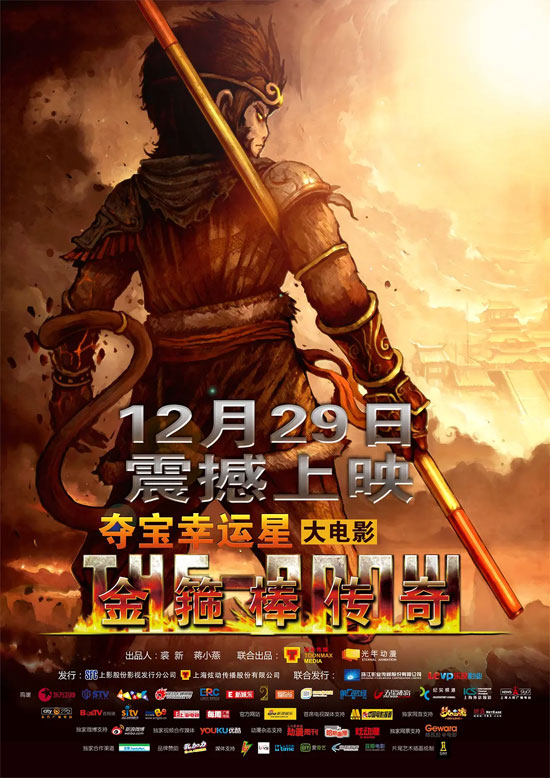Film Name: 金箍棒传奇 / The Grow

I’ve always felt that the defining characteristic of the Journey to the West narrative is its male-dominated structure. The core group of four (or five) protagonists consists entirely of prominent male figures. The concept of Buddha itself is essentially genderless—in contrast to masculine virility, it embodies a feminine essence. The men’s quest for scriptures represents a search for a feminine ideal—essentially a spiritual union with the “female” in the West. This explains why the Journey to the West quartet requires no real-world female presence.
Thus, introducing a female lead in adaptations of Journey to the West is risky, as it disrupts the core narrative of pure yang seeking yin. The Grow’s creative take on the origin of Sun Wukong’s golden staff is acceptable, but having a woman named Pinxiang hovering around the quartet like a nagging mother is utterly laughable. Personally, I believe it would be better to have the dashing Zhiwei transform into human form. Together, they could seek out Pinxiang, much like Shenxiang rescuing his mother. It must be a man who seeks and rescues a woman to align with the overall spirit of Journey to the West.
Zhiwei is a character designed to win over audiences, but Pinxiang is not. Many female viewers will say Zhiwei is cool and handsome, and boys will admire his heroic spirit, but few will envy, respect, or even aspire to be like Pinxiang. Beyond her love for Zhiwei, she has no distinct personality traits. Though she possesses magical abilities, it’s almost better if she didn’t. Without them, she might have elicited male empathy; with them, even that sympathy vanishes.
“The Grow” ultimately culminates in Sun Wukong falling in love with his own golden staff—a decent concept, but it fails to convey this love with the same bizarre and heartrending intensity as “A Chinese Odyssey Part Two: Cinderella.” Audiences might feel moved in the end, but it’s likely due to Pinxiang’s self-sacrifice in transforming back into the golden staff, not because of her love for Zhwei.
Regardless, “The Grow” is superior to the 2010 release “A New Journey To the West.” Back then, I wrote this review of “A New Journey To the West”: “We don’t demand educational value from an animated film, nor do we advocate for any didactic elements. But after watching an animated film, we should at least feel some emotional resonance. Yet when I finished watching ‘A New Journey To the West,’ I felt nothing.” True, I laughed heartily at its many cross-talk-style dialogues and spoof gags, but afterward I felt no joy because I gained nothing.” After watching “The Grow,” I was at least moved. After all, it contained elements of both “love”—romantic and self-sacrificing—rather than being purely meaningless spoof.
For a film that reimagines classic literature with absurd humor, memorable lines are a crucial benchmark. Tang Sanzang’s critique of his disciples—”Those who obey are useless, and those who are useful don’t obey”—left a deep impression on me. Additionally, when Sha Wujing repeatedly said, “I have something to say, but I don’t know if I should,” the entire theater of children burst into laughter.
Please specify:Anime Phone Cases » The Grow 2012 Animation Film Review: The Journey to the West Quartet Needs No Female Lead